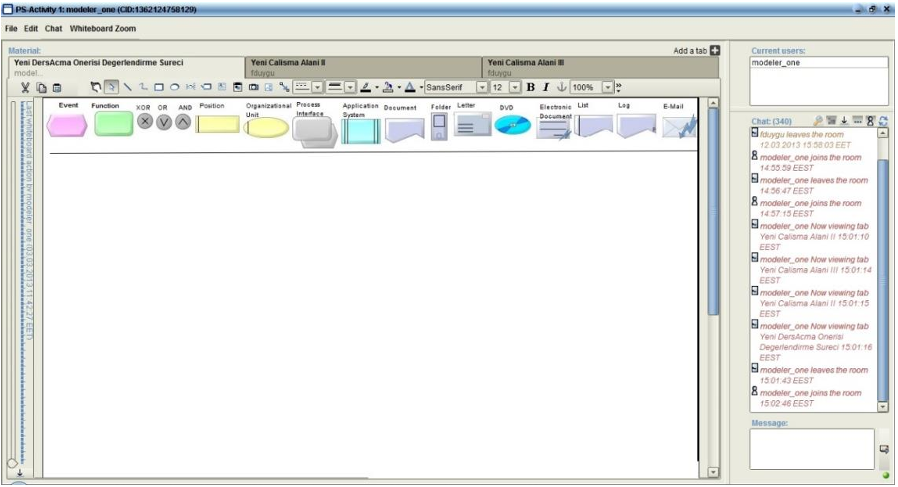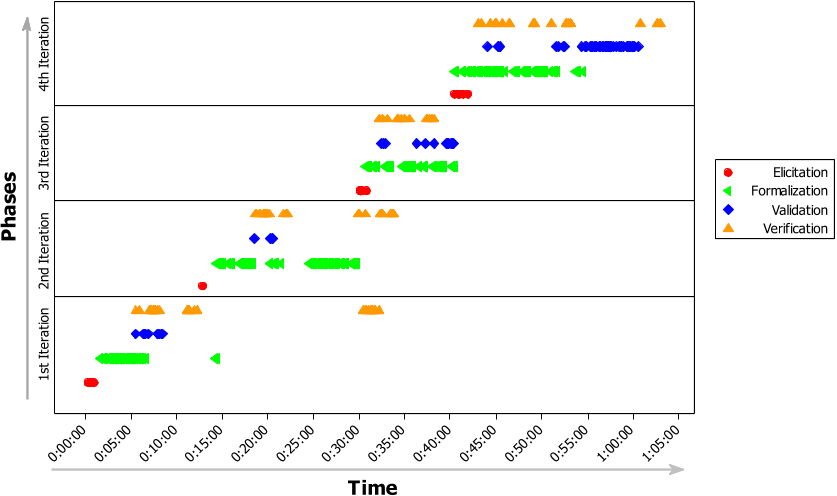synchronous manner with the help of computer-mediated communication tools (Riemer et al.,
2011). Asynchronous modeling is the most commonly used modeling approach in the BP
Modeling domain, where the process is initiated by one user while other users contribute to
the evolving model at a different time and most probably at a different location. Email,
collaborative writing and content management systems are often used for asynchronous
collaboration among stakeholders. In contrast, the synchronous modeling approach allows
stakeholders to engage in modeling at the same time without having to be at the same location.
In this case, communication is usually mediated by teleconferencing, video chat applications,
instant messengers, chat and shared drawing tools, which are based on the exchange of texts
and diagrams among multiple users (Zemel, 2005).
According to Riemer et al. (2011), commercial BP Modeling tools predominantly support the
asynchronous modeling approach. However, certain tools in the market such as ARISalign
(Software AG, 2012) and CoMoMod (Dollmann et al., 2011) use the synchronous process
modeling approach, which supports concurrent modeling activities during collaborative
process modeling. In addition, the Collaborative Cheetah Experimental Platform (cCEP)
developed for academic research provides an environment that supports the synchronous
approach (Forster et al., 2013). Despite using the same modeling approach, each environment
offers different features to facilitate synchronous collaborative work. For example, in some
systems including ARISalign, only one user has the right to edit the model at a time; however,
in others such as cCEP, all the stakeholders can use the whiteboard area concurrently and see
all the changes instantly without having to wait for the other users (Forster et al., 2013).
In this study, the constraints and affordances provided by systems with different CSCW
interaction methodologies for supporting cBPM processes were explored through two case
studies. To analyze the interaction between the participants during the cBPM practices,
publicly available tools ARISalign and VMTChat (Stahl, 2009) were used as a synchronous
CSCW environment. In the VMTChat platform, the stakeholders can use the modeling area
concurrently. An activity performed by a group member can be simultaneously seen by other
members. However, in ARISalign, only the active user, who first accesses the model, has the
right to edit the model and other users have to wait for the active user to complete his editing
on the whiteboard. The activities performed by the active user are temporarily disabled for
other group members when performing the modeling. In addition to the difference in this
interaction design of the shared whiteboard, the communication designs of the two systems
also differ. The VMTChat environment has a chat window placed on the right side of the
shared modeling area. Any message sent by a group member is open to all members. However,
in ARISalign, the participants can communicate using the discussion board, in which they can
initiate new topics and organize their communication. In this system, the discussion board and
shared modeling area are on two different pages. Therefore, messages cannot be seen while
the modeling activities are being performed.
In this study, an interaction analysis was performed on the communicational contents and
modeling activities of the two interaction methodologies in light of the following aspects of
the coordination theory; coordination, communication, awareness, group decision-making


















